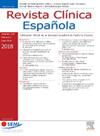暂时性单克隆性伽马病:单中心研究
IF 1.7
4区 医学
Q2 MEDICINE, GENERAL & INTERNAL
引用次数: 0
摘要
一些单克隆γ病的不确定意义是短暂的单克隆γ病,其特征是出现一个小的血清副蛋白,然后在一段可变的时间后消失。本研究的目的是通过描述其特征来检查我们卫生领域的短暂性单克隆伽玛病,以及它们在单克隆伽玛病发展时呈现的病理。方法回顾性分析6个月期间(2024年1月-2024年6月)的所有血清蛋白电泳图谱。所有这些血清蛋白电泳均在圣地亚哥德孔波斯特拉临床大学医院的临床分析服务部门进行处理,来自圣地亚哥德孔波斯特拉和巴尔班萨卫生区的初级和二级保健。仅选择无血液学病理且血清蛋白电泳无单克隆γ病和先前血清蛋白电泳存在单克隆γ病的患者。结果共检出80例短暂性单克隆γ病变,其中单克隆型68例(85%),寡克隆型12例(15%)。我们发现不同的诊断与短暂性单克隆伽玛病的存在相吻合,其中我们可以强调:35例(43.7%)为感染性疾病,20例(25%)为自身免疫性疾病,12例(15%)为移植患者。结论临床医生应考虑短暂性副蛋白的可能性,以避免不必要的检查和侵入性手术,这是在怀疑恶性肿瘤或持续单克隆的情况下使用的。本文章由计算机程序翻译,如有差异,请以英文原文为准。
Gammapatía monoclonal transitoria: un estudio unicéntrico
Objectives
Some of the monoclonal gammopathy of uncertain significance are transient monoclonal gammopathies, characterized by the appearance of a small serum paraprotein followed by its disappearance after a variable period of time. The aim of the present study is to examine the transient monoclonal gammopathies in our health area by describing their characteristics, as well as the pathology they presented at the time of the development of the monoclonal gammopathy.
Methods
A retrospective study was undertaken, in which all serum protein electrophoresis patterns performed during a 6-month period (January-2024/June-2024) were reviewed. All these serum protein electrophoresis were processed in the clinical analysis service of the Clinical Universitary Hospital of Santiago de Compostela from primary and secondary care of the Sanitary Area of Santiago de Compostela and Barbanza. Only patients without hematologic pathology who presented a serum protein electrophoresis without monoclonal gammopathy and who had previously presented a serum protein electrophoresis with the presence of monoclonal gammopathy were selected.
Results
A total of 80 transient monoclonal gammopathies were identified, of which 68 had a monoclonal pattern (85%) and 12 had an oligoclonal pattern (15%). We found different diagnoses coinciding with the presence of transient monoclonal gammopathy, among which we can highlight: 35 cases (43.7%) were infectious processes, 20 cases (25%) were autoimmune diseases and 12 cases (15%) were transplant patients.
Conclusions
Clinicians should consider the likelihood of a transient paraprotein to avoid unnecessary investigations and invasive procedures, which are used in case of suspected malignancy or persistent monoclonality.
求助全文
通过发布文献求助,成功后即可免费获取论文全文。
去求助
来源期刊

Revista clinica espanola
医学-医学:内科
CiteScore
4.40
自引率
6.90%
发文量
73
审稿时长
28 days
期刊介绍:
Revista Clínica Española published its first issue in 1940 and is the body of expression of the Spanish Society of Internal Medicine (SEMI).
The journal fully endorses the goals of updating knowledge and facilitating the acquisition of key developments in internal medicine applied to clinical practice. Revista Clínica Española is subject to a thorough double blind review of the received articles written in Spanish or English. Nine issues are published each year, including mostly originals, reviews and consensus documents.
 求助内容:
求助内容: 应助结果提醒方式:
应助结果提醒方式:


